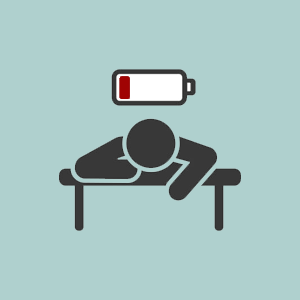 In today’s fast-paced, hyperconnected work environment, workplace burnout has become a pressing concern for both employees and organizations. Burnout is a state of physical and emotional exhaustion, often accompanied by feelings of reduced accomplishment and loss of personal identity. This phenomenon not only affects the well-being of employees but also has far-reaching implications for employee retention. In this blog post, we’ll delve into the symptoms, causes, and consequences of job burnout, explore its impact on employee retention, and discuss how HR departments can play a pivotal role in preventing burnout and promoting work-life balance.
In today’s fast-paced, hyperconnected work environment, workplace burnout has become a pressing concern for both employees and organizations. Burnout is a state of physical and emotional exhaustion, often accompanied by feelings of reduced accomplishment and loss of personal identity. This phenomenon not only affects the well-being of employees but also has far-reaching implications for employee retention. In this blog post, we’ll delve into the symptoms, causes, and consequences of job burnout, explore its impact on employee retention, and discuss how HR departments can play a pivotal role in preventing burnout and promoting work-life balance.
Understanding Work Burnout
Work burnout is characterized by a range of physical, emotional, and behavioral symptoms, including:
- Cynicism and Criticism: Becoming cynical or critical at work.
- Lack of Motivation: Dragging oneself to work and struggling to get started.
- Irritability: Developing impatience and irritability towards colleagues or clients.
- Reduced Productivity: A noticeable drop in energy levels and productivity.
- Difficulty Concentrating: Finding it hard to concentrate on tasks.
- Reduced Sense of Accomplishment: Experiencing diminished satisfaction from achievements.
- Disillusionment: Feeling disillusioned about one’s job.
- Coping Mechanisms: Using substances like food, drugs, or alcohol to cope.
- Sleep Disturbances: Changes in sleep habits, leading to insomnia or other sleep-related issues.
- Physical Symptoms: Experiencing unexplained headaches, stomach problems, or other physical complaints.
Job burnout can arise from various factors, including:
- Lack of Control: Employees unable to influence decisions affecting their job.
- Unclear Job Expectations: Ambiguity regarding roles, authority, and expectations.
- Dysfunctional Workplace Dynamics: Office conflicts, micromanagement, and undermining behavior.
- Extremes of Activity: Monotonous or chaotic work that demands constant energy.
- Lack of Social Support: Feeling isolated at work and in personal life.
- Work-Life Imbalance: Work demands overshadowing personal life.
Job Burnout and Employee Retention
The link between job burnout and employee retention is undeniable. A survey by Kronos revealed that 95% of HR leaders believe that employee burnout significantly undermines workforce retention. Nearly half of these HR leaders also noted that burnout accounts for up to half of annual workforce turnover. The consequences of ignoring burnout are far-reaching and can include excessive stress, fatigue, insomnia, mental health issues, and physical health problems.
The Role of HR in Preventing Burnout
HR departments play a crucial role in preventing burnout and promoting work-life balance within organizations.
To address this pervasive issue, HR professionals can take several proactive steps:
- Clear Boundaries: Work with managers and employees to establish clear boundaries for remote work. Encourage employees to disconnect from work during off-hours and respect personal time.
- Flexible Scheduling: If feasible, collaborate with managers and employees to create flexible schedules that allow for personal time without compromising work responsibilities.
- Communication: Regularly communicate with remote workers about the importance of engaging in hobbies, exercise, and maintaining a healthy lifestyle to reduce stress.
- Open Dialogue: Foster open and honest conversations with staff to identify and address burnout symptoms promptly.
- Workspace Separation: Encourage remote workers to maintain a dedicated workspace separate from their living area to reduce distractions and enhance productivity.
- Mental Health Resources: Promote the use of mental health resources, including online mental health assessments, to help employees identify and address burnout-related issues.
Conclusion
Workplace burnout is a growing concern with profound implications for employee retention and overall organizational health. HR departments must take proactive steps to prevent burnout by setting clear boundaries, offering flexibility, and promoting work-life balance. By addressing this issue head-on, organizations can create a healthier and more productive work environment, reducing the risk of employee burnout and its associated consequences. In doing so, they can foster employee satisfaction, engagement, and long-term retention, ultimately contributing to their overall success.
